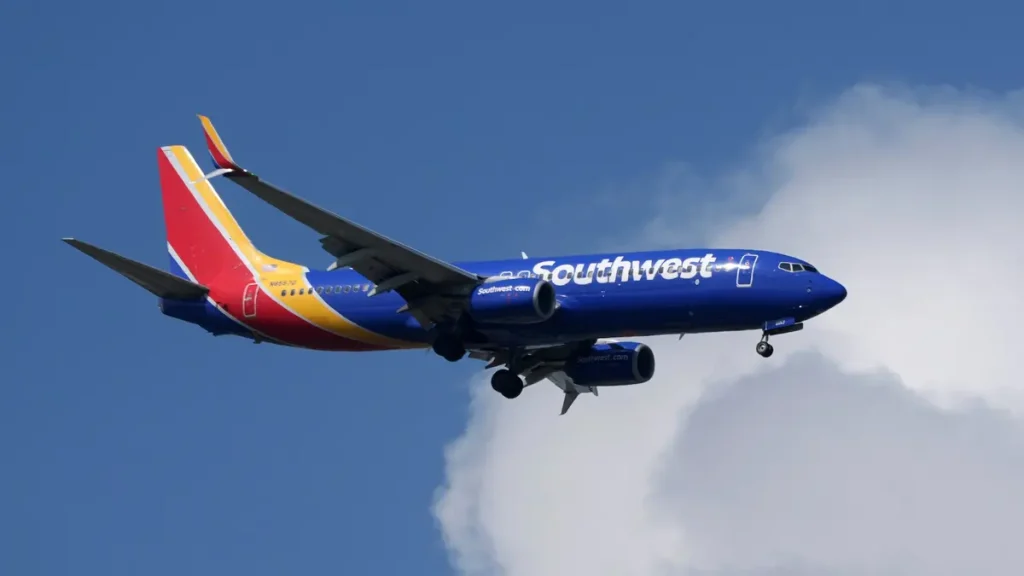A Southwest Airlines Boeing 737 operating Flight 1496 from Hollywood Burbank Airport to Las Vegas sharply descended nearly 500 feet shortly after takeoff to avoid what pilots identified as a potential mid-air collision with a Hawker Hunter aircraft. Two flight attendants were injured during the maneuver, which triggered widespread panic among passengers.
Southwest Flight Evasive Action
Approximately six minutes after takeoff—while climbing through 14,100 feet—the aircraft descended to about 13,625 feet in under 40 seconds. This sharp drop followed two onboard collision-avoidance alerts, prompting the pilot to first climb and then execute an abrupt descent in response to traffic warnings.
According to flight-tracking services such as Flightradar24 and FlightAware, at the closest moment the two planes were just 4.86 miles apart laterally and around 350 vertical feet apart. The second aircraft was later identified as a British-built Hawker Hunter Mk. 58, operating in the same controlled airspace.
Passenger Accounts
Passengers described scenes of sheer terror. Caitlin Burdi, among those who spoke to Fox News, said:
“It felt like the ride Tower of Terror… we thought we were plummeting to a crash.”
Steve Ulasewicz told ABC News he experienced a free-fall sensation lasting eight to ten seconds, during which people screamed and one unbelted passenger was propelled toward the ceiling.
Comedian Jimmy Dore, also onboard, posted on X that passengers “flew out of their seats & bumped heads on the ceiling,” illustrating the severity of the sudden descent. He remarked the pilot “had to dive aggressively to avoid midair collision over Burbank airport”.
Southwest confirmed that two flight attendants sustained injuries during the descent, though no passengers were reported hurt. The aircraft completed its journey and landed safely in Las Vegas, where medical personnel awaited to attend to the injured crew members.
Southwest Airlines issued a statement praising the professionalism of its crew and affirmed cooperation with the Federal Aviation Administration (FAA), which is now investigating the outcome of two simultaneous traffic alerts within the Los Angeles Air Route Traffic Control Center.
A spokesperson noted:
“Nothing is more important to Southwest than the safety of our customers and employees.”
This incident comes just days after a Delta Connection flight made an aggressive maneuver to avoid a mid-air collision with a U.S. Air Force B‑52 bomber over North Dakota—highlighting growing concerns over increasing near-collision incidents in U.S. skies.
Analysts await coordination findings: whether proper air traffic separation and situational awareness protocols failed could illuminate broader issues in civil-military airspace integration.
FAA Investigation
The FAA is reviewing cockpit alerts, ATC communications, and aircraft transponder data to determine how the Hawker Hunter entered airspace shared by a commercial jet at similar flight levels. Hollywood Burbank Airport authorities noted the incident occurred just outside tower-controlled zones, and no unusual radar activity was registered in tower logs.
Safety experts stress that while collision avoidance systems work as designed, the narrow lateral and vertical separation—mere 4.86 miles and ~350 feet—underscores the necessity for robust procedural safeguards when military or private jets operate near commercial corridors.


